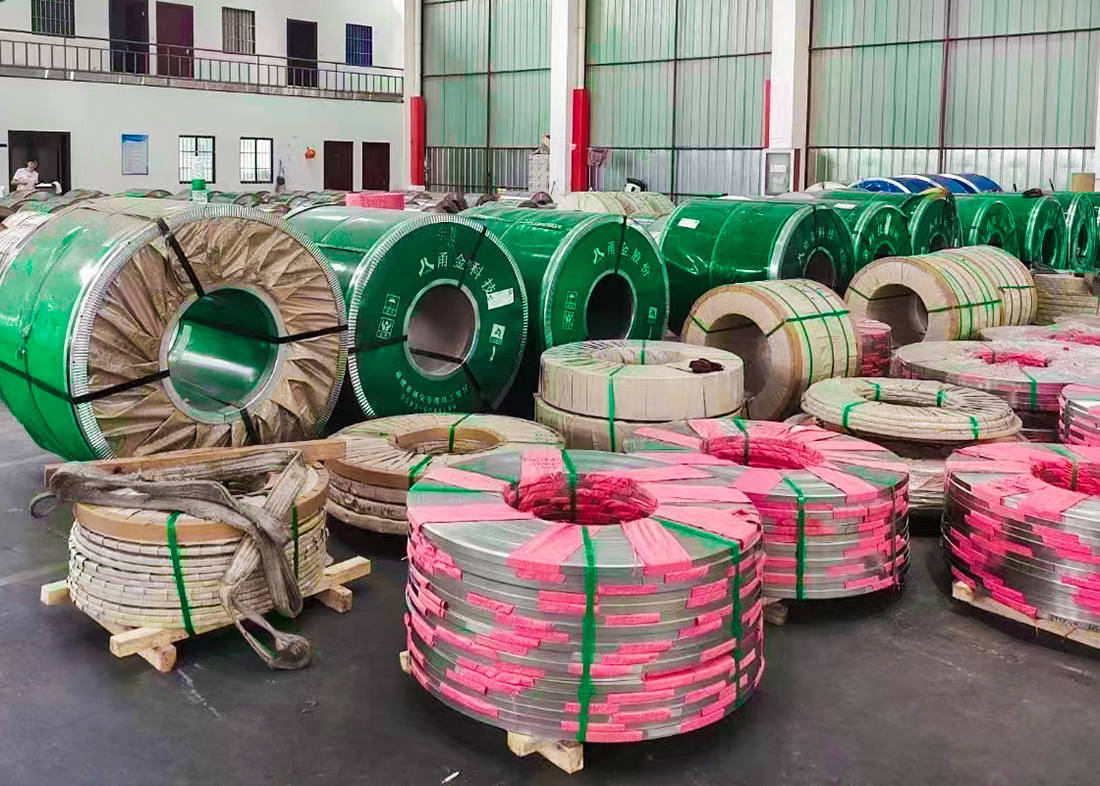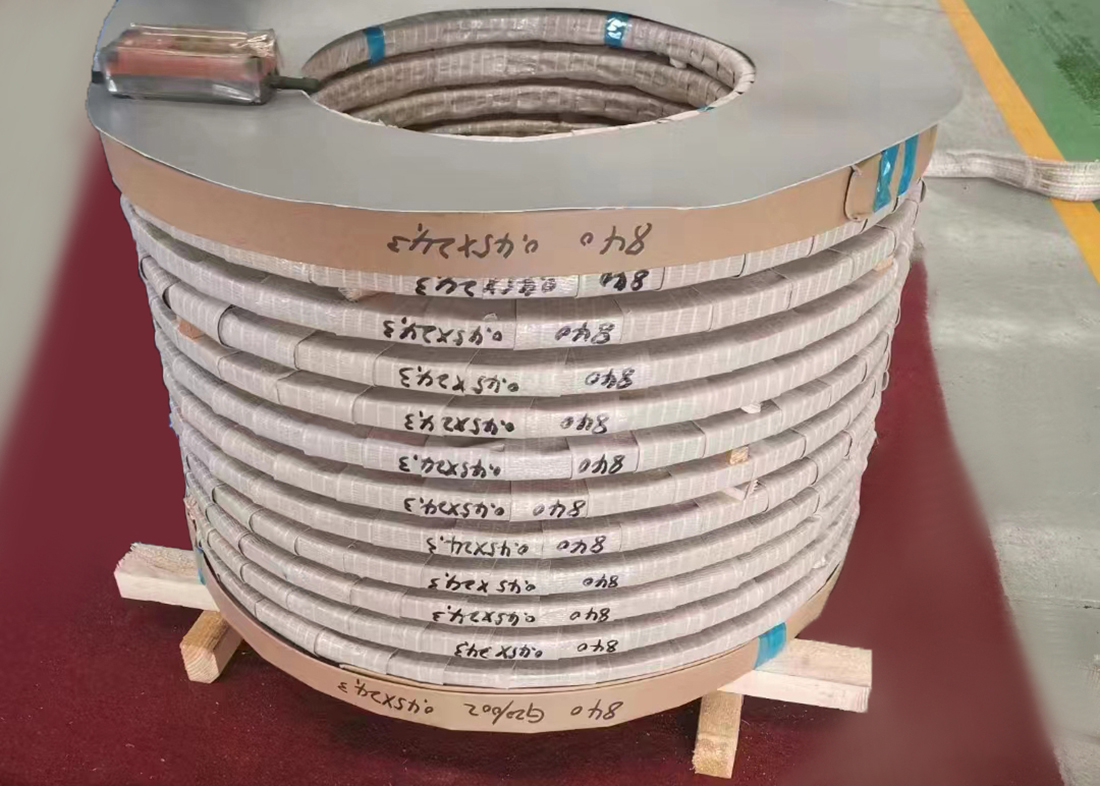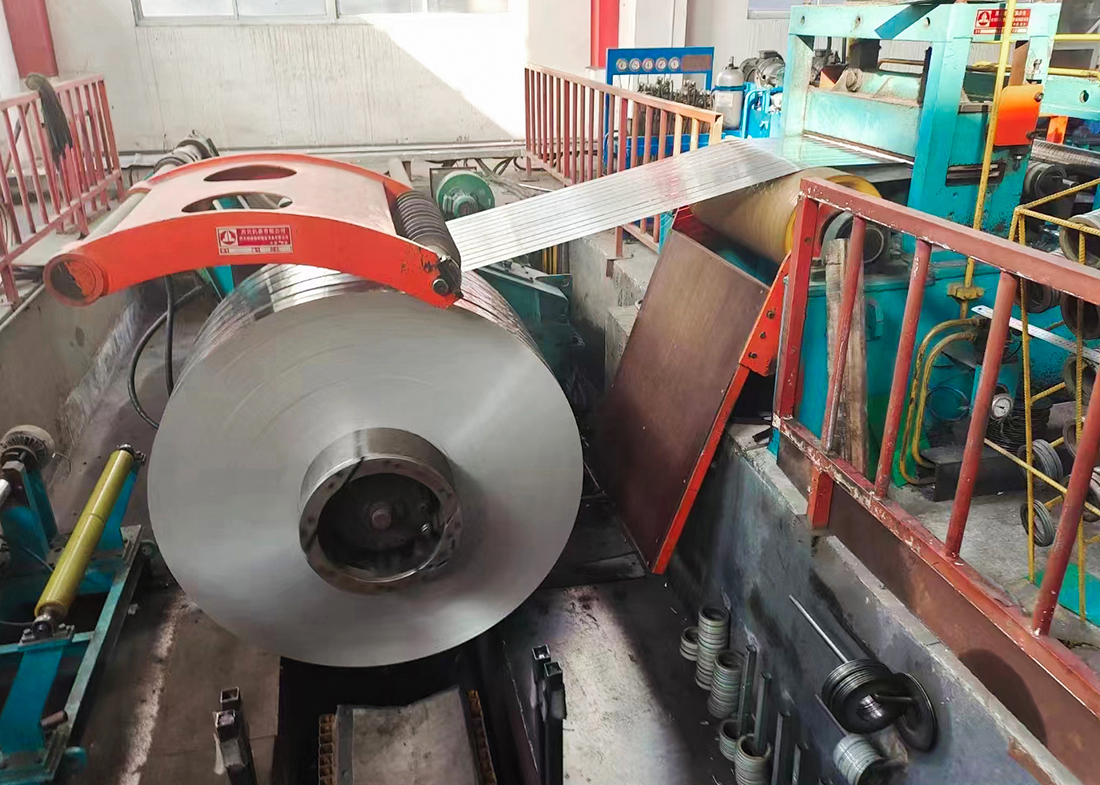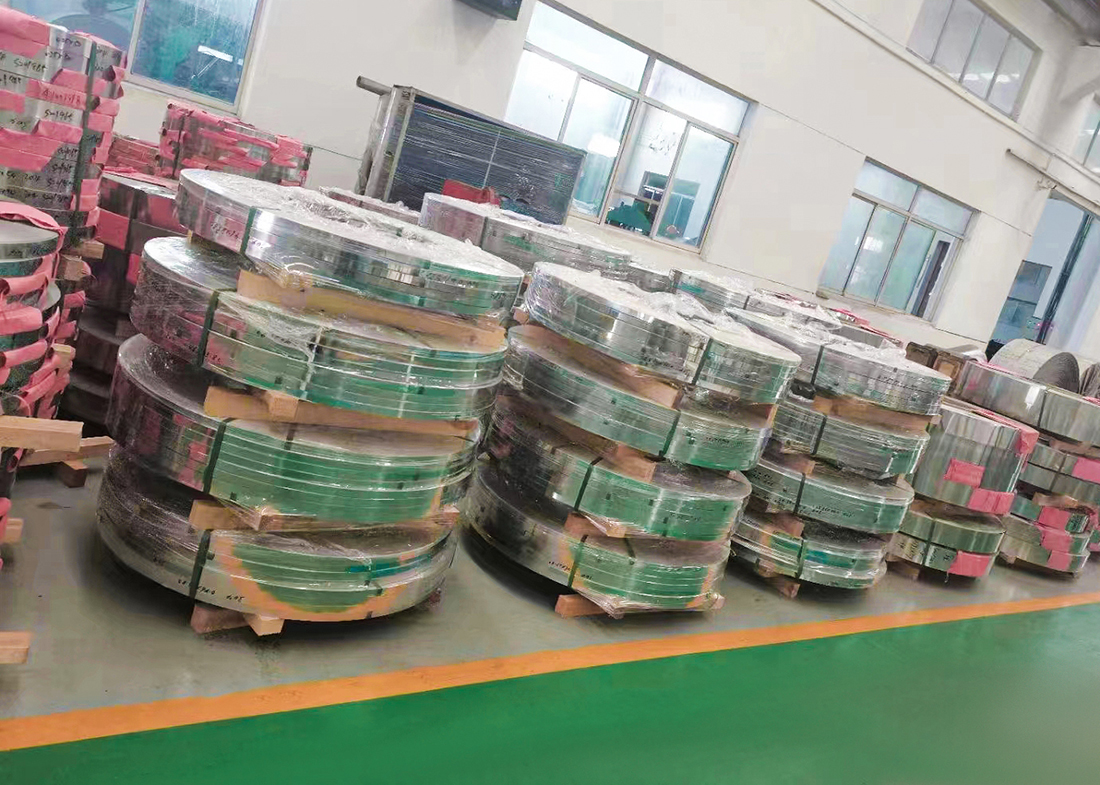
Why is stainless steel strip widely used in factories
source:www.zhengben56.com | Release time:2025年06月11日1、 Material performance advantages: adaptable to complex factory environments
1. Good corrosion resistance
Stainless steel strip contains alloy elements such as chromium (Cr) and nickel (Ni), and its surface is prone to forming a dense oxide film (passivation film), which can resist corrosion in industrial environments such as humidity, acidity, alkalinity, and salt spray. For example, in chemical factories, ordinary carbon steel is prone to rust and damage when exposed to acid solutions (such as sulfuric acid, hydrochloric acid) or solutions containing chloride ions, while 304 or 316 stainless steel strips can be used stably for a long time, reducing equipment maintenance and replacement costs.
Case: In food processing plants, stainless steel belts are used to make conveyor belts and storage tanks to avoid contamination of food due to rust and comply with hygiene standards (such as FDA certification).
2. High strength and durability
Stainless steel strips have high strength (such as martensitic stainless steel with a tensile strength of over 500MPa) and good toughness, and can withstand mechanical stress, vibration, or heavy loads during the operation of factory equipment. For example, the conveyor belt and mold support structure in the machining workshop require materials that do not deform under long-term friction and pressure, and stainless steel belts can meet the requirements.
3. High temperature resistance and oxidation resistance
Some stainless steel strips (such as 310S stainless steel) can withstand high temperatures above 800 ℃ and are used in metallurgical and heat treatment factories to manufacture furnace conveyors and heating element supports, avoiding oxidation and peeling at high temperatures.
2、 Adaptability to Processing and Forming: Meeting the Diverse Needs of Factories
1. Workability
Stainless steel strip can be flexibly formed through processes such as cold rolling, hot rolling, stamping, welding, bending, etc. For example:
Cold rolled stainless steel strip with controllable thickness (0.05mm~3mm) can be processed into precision parts (such as electronic equipment shielding covers);
Stamping forming is used to manufacture the shells and brackets of factory equipment (such as guide rails for automated production lines).
2. Diversity of surface treatment
Surface properties can be optimized through processes such as polishing, drawing, and electroplating
Mirror polished stainless steel strip is used in food and pharmaceutical factories for easy cleaning and disinfection;
The steel strip with a frosted surface is used in scenarios that require anti slip, such as factory floor anti slip strips.
3、 Cost and maintenance advantages: significant long-term economic benefits
1. Low lifecycle cost
Although the initial procurement cost of stainless steel strip is higher than that of ordinary carbon steel (such as 304 stainless steel, which is about 3-5 times the price of Q235 carbon steel), due to its strong corrosion resistance, it does not require frequent painting or replacement for corrosion prevention, and its long-term use cost is lower. For example, if carbon steel is used for outdoor equipment in coastal factories, it may be scrapped due to corrosion within 5-10 years, while stainless steel strips can be used for more than 20 years.
2. Convenient maintenance
The surface of stainless steel strip is smooth, not easy to adhere dirt or microorganisms, and easy to clean and maintain. In scenarios with high hygiene requirements such as pharmaceutical and food factories, simply wipe with clean water or neutral cleaning agents to comply with GMP (Good Manufacturing Practice) requirements.
4、 Environmental and safety features: comply with factory standards
1. Environmental friendliness
Stainless steel strips can be 100% recycled and reused, and equipment or waste materials eliminated by factories can be remelted to reduce industrial waste. For example, automobile manufacturing factories use stainless steel strips to make exhaust system components, which can be recycled and reused after being scrapped.
2. Security
Stainless steel strips do not release harmful substances and are flame retardant and non-conductive (some austenitic stainless steels have low conductivity), making them suitable for flammable and explosive environments (such as explosion-proof equipment in petrochemical plants).
prev:
What are the applications of stainless steel coil…
next:
What are the core performance advantages of stain…
【Related articles】
【Related products】
+
 WeChat ID:www.zhengben56.com
WeChat ID:www.zhengben56.com

 WeChat ID:www.zhengben56.com
WeChat ID:www.zhengben56.com










 Add WeChat
Add WeChat
 Contact us
Contact us
 The phone
The phone